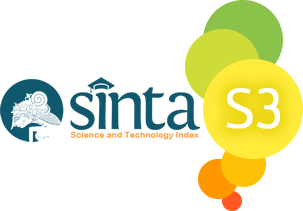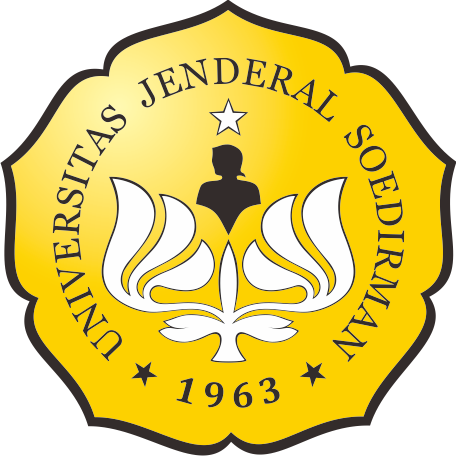GAMBARAN HEMATOLOGI MENCIT (Mus musculus) MODEL TOKSISITAS SUBKRONIS
Abstract
Garlic commonly is consumed as medicine to prevent or heal illness or to maintain someone's health. Many societies prefer garlic (Allium sativum) among other herbal remedies for cholesterol treatment. It consists of several types, and one of them is single bulb garlic used to treat hypertension. There has been, however, no published research reporting the toxicological properties of single bulb garlic. The purpose of this study was to determine subchronic toxic effects of single bulb garlic administered to mice using hematological parameters. The experiment parameters were hemoglobin and hematocrit levels, the number of erythrocytes and leukocytes. Male mice (Mus musculus) strain Balb-C were treated with single bulb garlic extract for 28 days with dosage levels of 0% (N ), 0.25% (P1 ), 0.5% (P2 ), 1% (P3 ), and 2% (P4 ). Single bulb garlic showed no effect on hemoglobin and hematocrit levels but increased the number of erythrocyte and leucocyte. We concluded that single bulb garlic did not cause subchronic toxic effects.
Keywords
References
Badan Pengawas Obat dan Makanan. 2014. Peraturan Kepala Badan Pengawas Obat dan Makanan Republik Indonesia Nomor 7 Tahun 2014 Tentang Pedoman Uji Toksisitas Nonklinik Secara In Vivo. Jakarta:Badan Pengawas Obat dan Makanan
Benkeblia N. 2004. Antimicrobial activity of essential oil extracts of various onions (Allium cepa) and garlic (Allium sativum). Algeria:Department of Biology, Monstaganem University. Lebensm-Wiss.u.-Technol. 37:263–268 https://doi.org/10.1016/j.lwt.2003.09.001
Bezu T, Gedamu F, Dechasse N, Hailu M. 2014. Registration of 'Chelenko P garlic (Allium sativum L.) Variety. East African Journal of Science. 8(1):71–74
Block E. 1992. The Organosulfur Chemistry of the Genus Allium-Implications for the Organic Chemistry of Sulfur. Albany: Department of Chemistry, State University of New York at Albany. Angew. Chem. Int. ed. Engl. 3f:1135–1178 https://doi.org/10.1002/anie.199211351
Borlinghaus J, Albrecht F, Gruhlk MCH, Nwachukwu I, Slusarenko AJ. 2014. Allicin: Chemistry and Biological Properties. Molecules. 19:12591–12618 https://doi.org/10.3390/molecules190812591
Choi IS, Cha HS, Lee YS. 2014. Physicochemical and Antioxidant Properties of Black Garlic. Molecules. 19:16811–16823 https://doi.org/10.3390/molecules191016811
Chung LY. 2006. The Antioxidant Properties of Garlic Compunds:Allyl Cysteine, Alliin, Allicin, and Allyl Disulfide. Journal of Medical Food. 9(2):205–213 https://doi.org/10.1089/jmf.2006.9.205
Dudek K, Sliwa E, Tatara MR. 2006. Changes In Blood Leukocyte Pattern In Piglets From Sows Treated With Garlic Preparations. Bull Vet Inst Pulawy. 50:263–267
Eidi A, Eidi M, Esmaeili E. 2006. Antidiabetic effect of garlic (Allium sativum L.) in normal and streptozotocin-induced diabetic rats. Phytomedicine. 13:624–629 https://doi.org/10.1016/j.phymed.2005.09.010
Gebreyohannes G, Gebreyohannes M. 2013. Medicinal values of garlic: A review. International Journal of Medicine and Medical Sciences. 5(9):401–408
Iweala EE, Akubugwo EI, Okeke CU. 2005. Effect of Ethanolic Extracts of Allium sativum Linn. Liliaceae (Garlic) on Serum Cholesterol and Blood Sugar Level of Albino Rabbits. Plant Product Research Journal. 9:14–18
Kemper KJ. 2000. Garlic (Allium sativum). The Longwood Herbal Task Force and Center for Holistic Pediatric Education and Research
Kopin LA. 2010. In The Clinic. Dyslipidemia. American College of Physicians
Lau BHS, Yamasaki T, Gridley DS. 1991. Garlic compound modulate macrophage and T-lymphocyte functions. Mol. Biother. 3(2):103–107
Sheen LY, Chen HW, Kung YL, Liu CT, Lii CK. 1999. Effects of garlic oil and its organosulfur compunds on the activities of hepatic drug–metabolizing and antioxidant enzymes in rats fed high–and low-fat diets. Nutr Cancer. 35 (2):160–6 https://doi.org/10.1207/S15327914NC352_10
Marsoul RD, Abbood RM, Abbas MT. 2016. Effect of Garlic Oil on Cyclosporine Induced Renal Toxicity in Rats. International Journal of Pharmacy & Pharmaceutical Research. 5(2).
Metwally MAA. 2009. Effect of Garlic (Allium Sativum) on Some AntioxidantActivities in Tilapia Nilotica (Oreochromis niloticus). World Journal of Fish and Marine Sciences. 1(1):56–64.
Neeraj S, Sushila K, Neeraj D, Milind P, Minakshi P. 2014. Garlic: A Pungent Wonder From Nature. International Research Journal of PharmacyI. 5(7):523–529 https://doi.org/10.7897/2230-8407.0507106
Nugroho SHP. 2015. Pengaruh Pemberian Bawang Putih Tunggal (Allium Sativum Linn.) Terhadap Penurunan Tekanan Darah Pada Penderita Hipertensi Di Dusun Juwet Desa Magersari Kecamatan Plumpang Kabupaten Tuban. Surya Jurnal Media Komunikasi Ilmu Kesehatan. 7(3):45–51
Nwabueze AA. 2012. The Effect of Garlic (Allium sativum) on Growht and Haematological Parameters of Clarias gariepinus (Burchell, 1822). Sustainable Agriculture Research. 1(2):222–228 https://doi.org/10.5539/sar.v1n2p222
Prasad K, Laxdal VA, Yu M, Raney BL. 1995. Antioxidant activity of allicin, an active principle in garlic. Mol Cell Biochem 1995. 148(2):183–189 https://doi.org/10.1007/BF00928155
Reinhart KM, Coleman CI, Teevan C, Vachhani P, White C. 2008. Effect of Garlic on Blood Pressure in Patients with and Without Systolic Hypertension:A Meta-Analysis. The Annals of Pharmacotherapy. 42(12):1766–1771 https://doi.org/10.1345/aph.1L319
Salman H, Bergman M, Bessler H, Punsky I, Djaldetti M. 1999. Effect of garlic derivative (alliin) on peripheral blood cell immune responses. International Journal Of Immunopharmacology. 21(9):589–597 https://doi.org/10.1016/S0192-0561(99)00038-7
Srivastava S, Pathak PH. 2012. Effect of Garlic (Allium sativum) Extract in Pattern Of Differential Count Of WBC In Female Albino Rats. International Journal of Pharmaceutical Sciences Review and Research. 13(2):83–86
Stevinson C, Pittler MH, Ernst E. 2000. Garlic for Treating Hypercholesterolemia, A Meta-Analysis of Randomized Clinical Trials. Annals of Internal Medicine. 133(6):420–429 https://doi.org/10.7326/0003-4819-133-6-200009190-00009
Suckow MA, Danneman P, Brayton C. 2001. The laboratory Mouse (A Volume In The Laboratory Animal Pocket Reference Series). Boca Raton, London, New York, Washington DC:CRC Press
Tesfaye A, Mangesha W. 2015. Traditional Uses, Phytochemistry and Pharmalogical Properties of Garlic (Allium sativum) and its Biological Active Compounds. International Journal of Scientific Research, Engineering and Technology. 1(5):142–148
Thomson M, Al-Amin ZM, Al-Qatan KK, Shaban LH, Ali M. 2007. Anti-diabetic and hypolipidaemic properties of garlic (Allium sativum) in streptozotocin-induced diabetic rats. Int J Diabetes & Metabolism. 15:108–115
Yeh YY, Liu L. 2001. Cholesterol-Lowering Effect of Garlic Extract and Organosulfur Compunds: Human and Animal Studies. The Journal of Nutrion. 131(3):9895–9935
Article Reads
Total: 28839 Abstract: 8654 PDF: 7852 HTML: 12333Refbacks
- There are currently no refbacks.

This work is licensed under a Creative Commons Attribution-ShareAlike 4.0 International License.
This website is maintained by:
Bio Publisher
The Faculty of Biology Publishing
Faculty of Biology
Universitas Jenderal Soedirman
Jalan dr. Suparno 63 Grendeng
Purwokerto 53122
Telephone: +62-281-625865
Email: biologi@unsoed.ac.id
T his website uses:
OJS | Open Journal System
A free journal management and publishing system that has been developed by the PKP (Public Knowledge Project) version 2.4.8.0.
All article content metadata are registered to:
Crossref
An official nonprofit Registration Agency of the International Digital Object Identifier (DOI) Foundation.
Articles in this journal are indexed by:









